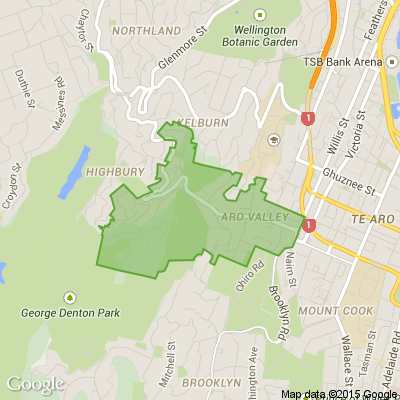Cat Allergy
What is cat allergen?
An allergen is a material that is capable of provoking an allergic reaction, such as pollen grains, dust mites or foods. Cat allergen is not cat hair, but a protein present in the dander and saliva of cats. These allergens become airborne as microscopic particles that can produce allergic symptoms when inhaled into the nose or lungs.
Although individual cats may produce more or less allergen, there is no relationship between the pet’s hair length and allergen production, and no such thing as a non-allergenic breed.
Where is cat allergen found?
Cat allergen is present in the largest amounts in homes with cats, but has also been found in homes where cats have never been present, and in offices or public spaces where animals are not allowed. Cat allergen is particularly sticky and is carried on clothing to other locations. It is almost impossible to not be exposed to some level of cat allergen. Of course, levels of exposure will be much higher where cats are present, and these levels are more likely to cause allergic symptoms.
Because cat allergen particles are particularly small (1/10 the size of dust mite allergen), they remain airborne for prolonged periods of time. Cat allergic individuals are more likely to have a rapid onset of symptoms when entering a room with cats, because the allergen will be in the air and can be easily inhaled. Opening windows, using exhaust fans and using high-efficiency air cleaners can decrease airborne allergen levels.
Soft furnishings, such as carpets, sofas, and mattresses, will hold cat allergen even after a cat is removed from the home or banished from the bedroom. It has been shown that it can take as long as 20 weeks for levels of allergen in carpets to decrease to the levels found in a home without a cat, and up to five years for cat allergen levels in mattresses to decrease to such levels. Removal or treatment of the carpet and sofa, and encasing of the mattress, will reduce the continued exposure to these reservoirs of allergen.
Cat allergen is also found on vertical surfaces such as walls. Attempts to decrease cat allergen exposure in a home should include wall cleaning. If the cat is removed to a restricted area of the home, it is important to realise that airflow through the duct system in a hot air heated home could spread the allergen. Efficient vent and furnace filters could help trap the allergens and reduce this spread.
Step 1: Use Allergen Wash. To get all the cat saliva and dander off your clothing and bedding, use a special detergent that removes all allergens. Use the warmest water setting possible for the fabrics to get all of the saliva and dander out.
Step 2: Use a vacuum with a high efficiency air filter. These filters remove more allergens from the carpeting and upholstery than regular vacuums. Vacuum all the floors and furniture thoroughly to get everything out. Wait several hours after the first vacuuming and go over everything again. This allows the dust you stir up the first time to settle, and you get the remnants of that dust on the second vacuuming. Make sure to empty the vacuum or change the bag outside to prevent everything you vacuumed from coming back in.
Step 3: Steam clean. After vacuuming everything completely, go over the whole area with a steam cleaner. The steam cleaner gets more of the allergens out of the carpet than the vacuum, picking up the cat saliva and dander deeper in the fibres.
Step 4: Take it to the cleaners. Take things you can't wash, such as curtains, to the cleaners. Cleaning will remove the cat saliva and dander from the fabrics. Curtain Clean has a special product used to remove cat allergen. You should advise your curtain or dry cleaners of your allergy so they may apply the correct product.
Step 5: Keep the cats off your fabrics. As soon as the cats get close to any of the fabrics, the dander and saliva will return. Studies have demonstrated that washing of cats with water removes much of their surface allergen, and significantly reduces the amount of future cat allergen produced.
Poll: Do you think NZ should ban social media for youth?
The Australian Prime Minister has expressed plans to ban social media use for children.
This would make it illegal for under 16-year-olds to have accounts on platforms including TikTok, Instagram, Facebook and X.
Social media platforms would be tasked with ensuring children have no access (under-age children and their parents wouldn’t be penalised for breaching the age limit)
.
Do you think NZ should follow suit? Vote in our poll and share your thoughts below.

-
84.1% Yes
-
14.2% No
-
1.6% Other - I'll share below
Today's Riddle: Guaranteed Brain Stretch!
What bird is the strongest of them all?
Do you think you know the answer to our daily riddle? Don't spoil it for your neighbours! Simply 'Like' this post and we'll post the answer in the comments below at 2pm.
Want to stop seeing riddles in your newsfeed?
Head here and hover on the Following button on the top right of the page (and it will show Unfollow) and then click it. If it is giving you the option to Follow, then you've successfully unfollowed the Riddles page.

Combining biking with bus travel
Hi neighbours
Anyone out there who, like me, would love to bike more, but have difficulty getting their bike on the rack on the bus ? It's sometimes necessary, so as to avoid steep hills and roads where I don't feel safe.
Metlink say their drivers aren't meant to help.








 Loading…
Loading…






















